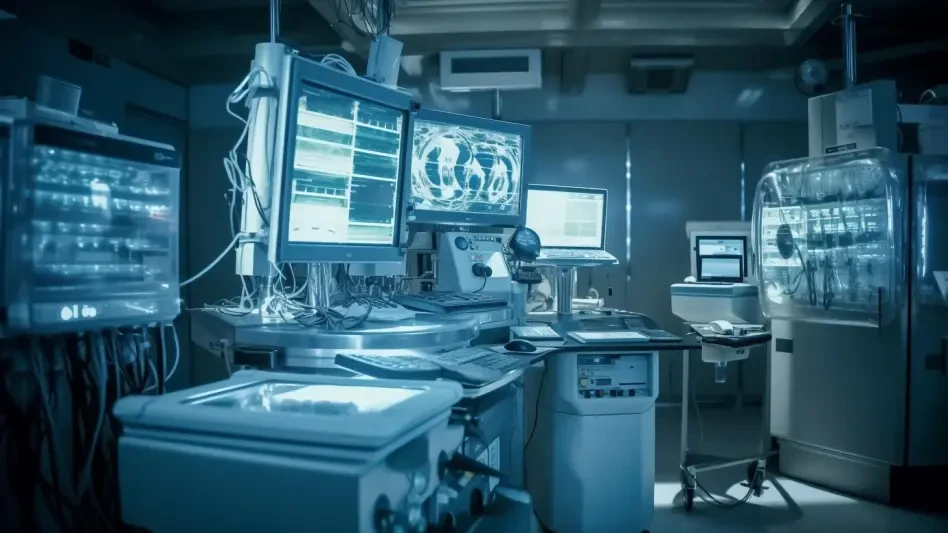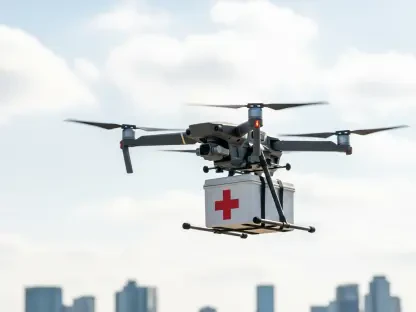The medical device industry has rapidly embraced technological advancements, leading to a significant shift towards predictive analytics for maintenance practices. As the percentage of connected medical devices steadily increases, companies in the field have prioritized remote monitoring to enhance device efficiency and reduce operational costs. This adoption is driven by the need to improve clinical outcomes and ensure high customer satisfaction. Historically, device maintenance relied heavily on on-site services provided by field engineers. However, the advent of connected devices has necessitated a transition towards remote management, aiming to prevent device failures before they occur and recommend timely upgrades. Predictive analytics has emerged as a promising tool in this evolution, offering substantial benefits beyond traditional maintenance approaches.
Remote Monitoring as a Strategic Focus
The integration of predictive analytics into medical device maintenance allows companies to cultivate a deep understanding of when a device is likely to fail, thus minimizing the need for in-person assessments. The use of predictive tools enables the detection of potential issues, enhancing device reliability and safety while prolonging its lifespan. This approach can significantly reduce the frequency of field service visits, translating into considerable cost savings for medical device companies. Beyond economic advantages, predictive maintenance ensures compliance with patient safety regulations by preemptively addressing risks and anomalies. By proactively identifying and mitigating safety threats, companies can maintain high standards of care and reliably safeguard patients’ health. The strategic focus on remote monitoring aligns with the industry’s commitment to delivering advanced healthcare solutions and maximizing device performance.
The Role of IoT and Advanced Analytics
To effectively deploy predictive analytics solutions, medical devices must be connected to robust analytics platforms through IoT gateways. This connectivity facilitates real-time data streaming from devices, providing essential metrics for descriptive analytics. By examining key performance indicators (KPIs) like device utilization, downtime, and potential threats, companies gain critical business insights into device performance. The implementation of interactive dashboards powered by Amazon Managed Grafana or Amazon QuickSight allows service managers and field engineers to monitor these KPIs efficiently. Additionally, advanced analytics play a pivotal role in pinpointing unusual behavior in devices, forecasting their health, and reducing unnecessary site visits. Such predictive capabilities empower healthcare providers to maintain devices proactively, thereby enhancing the overall care delivery process.
Leveraging Predictive Technology for Improved Maintenance
The ongoing review of device health scores is instrumental in identifying units that require proactive maintenance, preventing further deterioration. Utilizing AWS IoT Events, abnormalities can be promptly detected and alerts sent to relevant personnel. Furthermore, the integration of GenAI and other assistive technologies helps construct virtual assistants, providing technicians with streamlined, adaptable solutions for troubleshooting systems. These AI-powered service assistants offer transformative support and can be efficiently developed using platforms like Amazon Lex. Additionally, AWS managed solutions such as Monitron facilitate comprehensive predictive maintenance by capturing and analyzing device data for anomalies and enabling real-time alerts. This proactive strategy is reliant on a fusion of operational data produced by medical device services teams and providers, ensuring seamless device operation.
Unification and Future Insights
Medical device firms can create unified data platforms by integrating device, operational, and clinical data into a single source. This unification offers a treasure trove of business insights and trends, such as utilization rates and downtime, which are crucial for achieving proactive device maintenance. By harnessing this comprehensive data, companies can optimize inventory management and streamline operations, ultimately delivering superior healthcare solutions. Predictive analytics empowers these firms to schedule maintenance before devices fail, reducing downtime and unforeseen disruptions. By blending structured and unstructured data into tailored predictive models, devices deviating from normal behavior can be swiftly identified, making predictive analytics solutions a cornerstone for innovative maintenance strategies. This pathway strengthens the proposition for all stakeholders, reinforcing a sustainable and efficient healthcare ecosystem.
Transformative Implications for Stakeholders
The advancement in predictive analytics for medical device maintenance is transforming the industry for its stakeholders significantly. By adopting proactive maintenance strategies, companies can optimize inventory management, ensuring spare parts are available when needed across various facilities. Through integrating data from enterprise resource planning and inventory management systems, medical device firms secure ample stock levels, preventing shortages and unnecessary disruptions. This approach also augments the productivity of field service engineers by equipping them with AI-driven tools for efficient troubleshooting and device management. Such practices not only enhance device reliability but also cultivate a spirit of innovation within the medical device sector. The persistent focus on progressive improvements equips companies to handle future challenges while embracing new opportunities in healthcare delivery. This ongoing evolution promises profound impacts, ensuring the medical device industry remains a leader in safety, efficiency, and technological progress for years to come.









